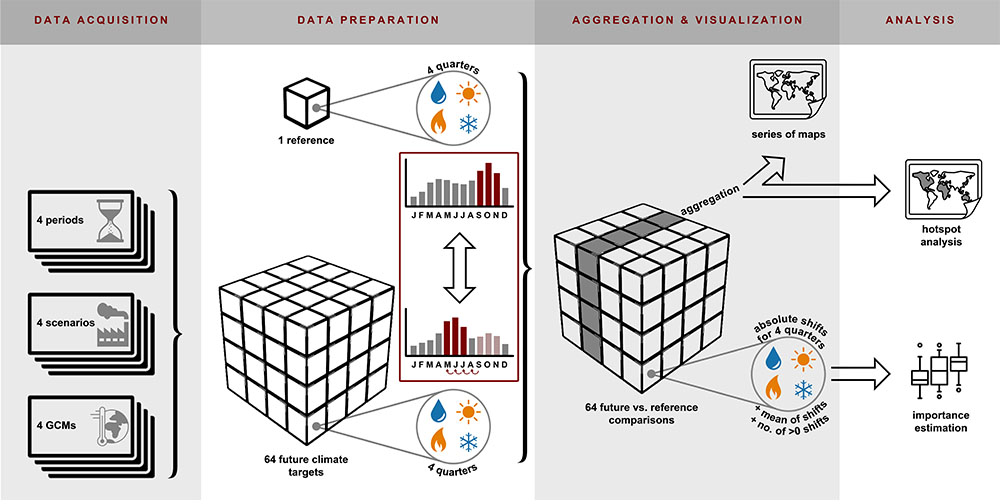Researchers Expect Significant Changes in the Within-Year Distribution of Temperature and Precipitation
In addition to rising temperatures, climate change could lead to significant shifts in the within-year distribution of temperature and precipitation. These changes are expected to affect, among other things, the distribution of species and other ecological phenomena. According to Ákos Bede-Fazekas and Imelda Somodi, researchers at the HUN-REN Centre for Ecological Research, the within-year dynamics of climatic features may have hidden effects that have so far escaped the attention of modellers. Current models could produce misleading results due to these shifts in the within-year distribution of temperature and precipitation.
The future distribution of species is usually determined using various bioclimatic variables, such as the temperature during the wettest quarter of the year. However, the periods these variables are based on—known as specific climate periods, in our example the wettest quarter—can shift due to climate change. Furthermore, these shifts can easily go unnoticed.
Consequently, shifts in the within-year position of specific climate periods reduce the reliability of distribution models that use bioclimatic variables, especially if the modeller is unaware of this hidden effect.
“Will Hungary be the only country to face such an unfortunate situation in the future, from a modelling point of view, or will this problem affect the entire planet, perhaps with some regions being particularly impacted?” Ákos Bede-Fazekas outlined their research questions. “We knew that the results—whatever they might be—would not only be of interest to us but could also provide valuable information to other distribution modellers. However, in order to achieve this, we had to synthesise the vast amount of data and the results extracted from it.”
The analysis by HUN-REN researchers, covering the entire globe and incorporating four climate models, four scenarios, and four future time periods, has been published in the prestigious scientific journal Global Change Biology. The study highlights the areas most affected by specific climate period shifts (SCP shifts).

The researchers found several examples of SCP shifts exceeding two months, with six-month shifts—the maximum possible shift—also predicted. There is concern that many species may struggle to adapt to such significant rearrangement of the within-year distribution of climate features. Species that have adapted over millennia to receive precipitation in early summer may face a serious challenge if most of the precipitation shifts to autumn or winter, when they can no longer use it effectively. This could lead to migration or, in the worst case, extinction.

"Woody plants, for example, are less able to adapt to the shift of precipitation from summer to winter because they lack foliage in winter. Even in the absence of frost—which would also inhibit photosynthesis—they cannot compensate for the growth lost during the summer. In contrast, grasslands dominated by grasses can green up more easily during a mild, wet winter and may even dry out during summer droughts without dying completely," the researchers explained. They added that annual agricultural crops are likely to face even greater challenges due to precipitation shifts.
"Many areas in the tropics are expected to experience both temperature- and precipitation-related SCP shifts, but such shifts are also widely predicted for the temperate and Arctic zones," said Imelda Somodi, summarising the map-based analyses.

